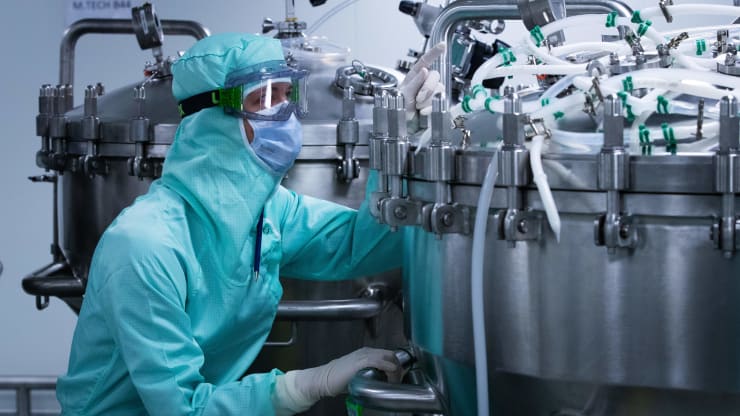Op-ed: The coronavirus pandemic underscores the need to bring drug manufacturing back to U.S.
Action to onshore America’s critical medical supply chain and modernize infrastructure for life sciences manufacturing is long overdue. Even prior to the pandemic, our supply chain was under pressure.
For example, over 70% of the facilities that are registered to or can produce active pharmaceutical ingredients and over 50% that manufacture finished dosage forms for pharmaceuticals are located outside the United States. Our foreign dependency has serious potential consequences including vulnerability to drug shortages. We’ve seen the effects of this firsthand during Covid-19, from the rapid depletion of the Strategic National Stockpile to hospital-reported shortages of both drugs and medical supplies, like gowns and masks.
This is not a new problem. The Food and Drug Administration has spotlighted this issue for years. As regulators, we’ve learned this problem has two sides.
First, companies are incentivized to outsource medical manufacturing to countries such as China and India where the cost of both labor and manufacturing is lower than in the United States, leaving the supply chain vulnerable to shocks and disruption. Second, the adoption of new manufacturing technologies has been slow, with many companies continuing to rely on the same, fifty-year-old processes for producing drugs and devices. In other words, we’re often using 20th century technology to manufacture 21st century cures.
Over the past decade, the FDA has updated its regulatory processes to address these dual challenges of supply chain security and barriers for emerging technologies. To proactively identify shortages and bad actors, the FDA created an Office of Pharmaceutical Quality and has quadrupled its inspections of foreign manufacturers. To encourage investment in domestic capacity, the FDA invested millions of dollars into an initiative to “Bring MedTech Manufacturing Home.”
To provide regulatory support to developers of potential cost-saving technologies like continuous manufacturing, which is a dynamic process that can simplify and centralize pharmaceutical production, the FDA created an Emerging Technology Team and issued new guidance documents to industry.
The FDA can’t do it alone. We need enduring solutions that address the root causes of America’s medical manufacturing crisis. First, we need better data to untangle the knots of our supply chains. The FDA has recommended the creation of a quality rating system and has highlighted the need for systematic study of the contracting practices which may contribute to drug shortages.
Second, an effort needs to be made to incentivize manufacturers to return home. The Department of Health and Human Services recently spearheaded an effort to expand domestic pharmaceutical manufacturing for Covid-19 medical products and is partnering with the Department of Defense to leverage their authorities to further expand sustainable domestic capacity. Hospitals have banded together to manufacture their own generic drugs. We need to build on these investments to secure America’s medicine cabinet for future generations.
Third, it won’t be enough to just bring supply chains back home. Innovators need to ensure investments in medical manufacturing focus on new technologies, from continuous manufacturing of pharmaceuticals to additive manufacturing of medical devices. We need to invest in small, nimble innovators that use the latest technologies to ensure our supply chain is flexible to support acute spikes in demand during emergency situations.
Dr. Stephen M. Hahn is the commissioner of the Food and Drug Administration and Dr. Anand Shah is deputy commissioner for medical and scientific affairs at the FDA.
OTHER VIEW POINTS
CNBC

